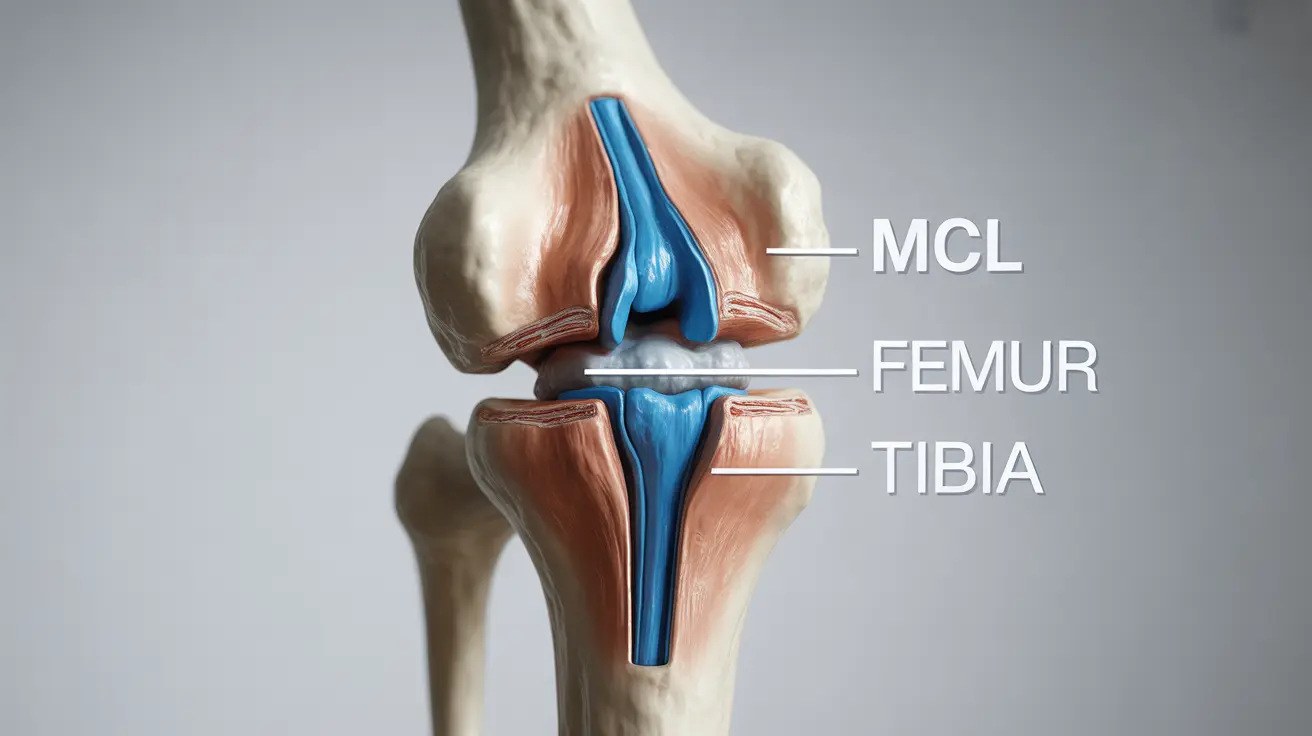A medial collateral ligament (MCL) injury is one of the most common knee injuries, particularly among athletes and active individuals. This crucial ligament, located on the inner side of your knee, helps stabilize the joint and prevent excessive sideways movement. Understanding the signs, diagnosis, and treatment options for MCL injuries is essential for proper recovery and preventing long-term complications.
What is the Medial Collateral Ligament?
The medial collateral ligament is a strong band of tissue that runs along the inner side of your knee, connecting your thighbone (femur) to your shinbone (tibia). It plays a vital role in providing stability to the knee joint, particularly during side-to-side movements and protecting against forces that push the knee inward.
Common Causes of MCL Injuries
MCL injuries typically occur due to direct impact or excessive force applied to the outer side of the knee, causing the ligament to stretch or tear. Common scenarios include:
- Contact sports collisions
- Sudden direction changes during athletic activities
- Landing awkwardly from jumps
- Skiing accidents
- Direct blows to the outer knee
Understanding MCL Injury Grades
Medical professionals classify MCL injuries into three distinct grades based on severity:
Grade 1 MCL Injury
A mild sprain where the ligament is stretched but not torn. Symptoms are typically mild, and recovery is usually straightforward.
Grade 2 MCL Injury
A partial tear of the ligament, resulting in moderate pain and instability. These injuries require more extensive treatment and longer recovery times.
Grade 3 MCL Injury
A complete tear of the ligament, causing significant pain and knee instability. These injuries may require surgical intervention in some cases.
Diagnosis and Assessment
Healthcare providers use several methods to diagnose MCL injuries accurately:
- Physical examination
- Valgus stress test
- Magnetic Resonance Imaging (MRI)
- X-rays to rule out associated injuries
Treatment Approaches
Treatment for MCL injuries varies depending on the severity and may include:
Conservative Treatment
Most MCL injuries respond well to non-surgical treatment options:
- RICE protocol (Rest, Ice, Compression, Elevation)
- Protective bracing
- Physical therapy exercises
- Anti-inflammatory medications
Surgical Intervention
Surgery is rarely needed for isolated MCL injuries but may be necessary in cases of:
- Complete tears with significant instability
- Multiple ligament injuries
- Failure of conservative treatment
Recovery and Rehabilitation
The recovery timeline varies based on injury severity and individual factors. A comprehensive rehabilitation program typically includes:
- Progressive strengthening exercises
- Range of motion activities
- Balance and proprioception training
- Sport-specific conditioning
Frequently Asked Questions
What are the common symptoms and signs of a medial collateral ligament (MCL) injury? Common symptoms include pain along the inner knee, swelling, stiffness, and a feeling of instability when walking or changing direction. You may also hear or feel a popping sensation at the time of injury.
How is a medial collateral ligament injury diagnosed by doctors? Doctors diagnose MCL injuries through physical examination, including specific tests to check knee stability. They often confirm the diagnosis using MRI imaging to assess the extent of the injury and rule out other knee problems.
What are the typical treatment options for different grades of MCL injuries? Grade 1 injuries typically require rest, ice, and brief immobilization. Grade 2 injuries need longer rest periods and physical therapy. Grade 3 injuries may require more extensive treatment, including prolonged bracing and comprehensive rehabilitation, with surgery in some cases.
When is surgery necessary for a medial collateral ligament tear? Surgery is rarely needed for isolated MCL injuries but may be necessary when there are multiple ligament injuries, complete tears with significant instability, or when conservative treatment fails to provide adequate healing.
How long does it usually take to recover from an MCL injury and return to normal activities? Recovery time varies by injury grade: Grade 1 injuries typically heal in 1-3 weeks, Grade 2 injuries in 4-6 weeks, and Grade 3 injuries may take 8-12 weeks or longer. Return to sports usually requires additional rehabilitation time to ensure full strength and stability.




